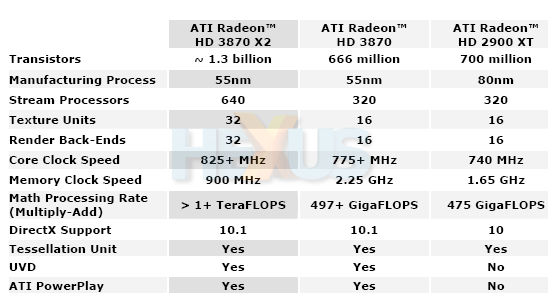Intoduction
Introduced just over two months ago and improving on the Radeon HD 2900 XT design by
endowing it with a larger feature-set, ATI's range-topping Radeon
HD 3870
offered similar performance for just £150. It wasn't fast
enough
to give the now-venerable NVIDIA G80 SKUs a run for their money, but
battled well in the volume space where it competed against a couple of
NVIDIA refreshes - the GeForce 8800 GT and 8800 GTS 512.
ATI would have to architect a grounds-up design to substantially
increase pure performance. Such a move would be costly in terms of time
to market and, well, sheer design expense. Now, it's done what we all expected, that is, combined two Radeon HD
3870s on to a single PCB (printed circuit board), CrossFired them, and officially launched a
dual-GPU card to cater for the high-end of the market.
Let's now see if such a move pays off.
ATI has traditionally left it to its partners, most notably Sapphire, to custom-design dual-GPU-on-a-single-PCB cards. This time, ATI's R680 design is a reference model that will ship directly to AIBs. The technical details do reveal that ATI has tweaked clock frequencies and a bunch of minor features, when compared to the single-GPU Radeon HD 3870.










